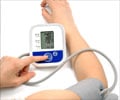Parkinson's disease patients have a sudden drop in blood pressure while standing, a condition known as orthostatic hypotension.

The study examined 173 people with Parkinson's disease who had been referred for testing for autonomic problems that can cause dizziness and fainting. They were compared to 173 people who did not have Parkinson's but had a condition called orthostatic intolerance (develop symptoms when upright that go away when lying down).
Two types of blood pressure were monitored. The first one is called transient orthostatic hypotension (blood pressure falls dramatically upon rising from sitting or lying down), and the second one classic orthostatic hypotension (blood pressure drops within three minutes after standing, and then returns to normal).
Study Results
- 19% of the people with Parkinson's had classic orthostatic hypotension.
- Transient orthostatic hypotension occurred in 24% of people with Parkinson's.
- 21% of the people with orthostatic intolerance.
- 40% of those with Parkinson's had a history of falls. Of those, 29% fell due to fainting.
- Treatments for orthostatic hypotension improved symptoms in six people.
- Six people were told to stop taking their high blood pressure medication, three of them said symptoms improved.
- Three people started taking adrenergic drugs (midodrine in two cases and droxidopa in another); the patient taking droxidopa reported an improvement in symptoms.
"While these results are preliminary and larger studies are needed, they suggest that these treatments that have been used for classic orthostatic hypotension may prove effective for transient orthostatic hypotension as well," Fanciulli said.
Source-Medindia















